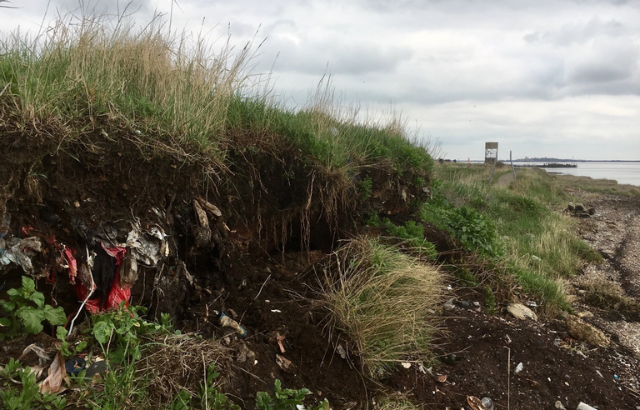
Photograph of a landfill site
Climate change is increasing the likelihood that historic coastal landfills will be inundated by sea level rise and storm surges or eroded resulting in the release of contaminants to the coastal zone, posing s potential threat to the marine environment.
Current regulations insufficient
Currently, landfill regulation and risk assessment only consider the potential impacts of sites being flooded by freshwater resulting in the release of soluble contaminants (or ‘leachates’). This means that the potential consequences of climate change on the UK’s c. 1200 historic coastal landfill sites, with the potential for inundation from salt water, is largely unknown.
The study has shown that the erosion of solid waste materials from poorly-maintained historic coastal landfill sites poses a greater threat to the environment than leaching from well-maintained sites.
Dr James Brand, Honorary Research Fellow at Queen Mary, and lead author of the study said: “Our research shows that current landfill regulations don’t adequately assess the risk of pollution due to metals leaching from landfills in coastal environments. However, leaching of metals from well-maintained landfill sites is unlikely to be a problem, the real concern is the erosion of solid waste materials from poorly-maintained historic landfills.”
Targeted policy interventions needed
Kate Spencer, Professor of Environmental Geochemistry at Queen Mary and co-author of the study and project lead said: “Our previous research has shown that historic landfill sites have begun to erode with potentially serious consequences for the marine environment. This research shows that the way we manage these sites is vitally important, policy interventions should prioritise eroding sites as these present the biggest risk to the coastal environment.”
It is estimated that there are more than 10,000 historic landfills in Europe that are vulnerable to flooding or erosion. Previous research from Queen Mary University of London has indicated that there are c. 1200 such sites on England’s coastline, constructed prior to modern environmental regulation with little monitoring or knowledge of waste content, and some have already started to erode.
More information
Research paper: J.H. Brand and K.L. Spencer, Will flooding or erosion of historic landfills result in a significant release of soluble contaminants to the coastal zone?, Science of the Total Environment (2020)



